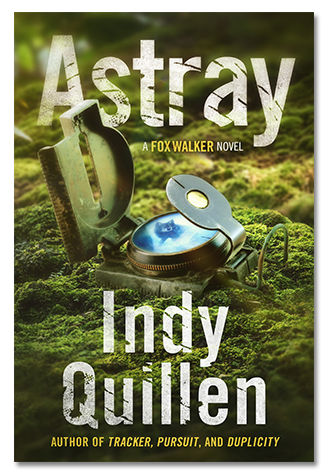Has your vehicle ever broken down, leaving you stranded for hours?
 Have you ever been caught in a sudden snowstorm, or ice storm, making roads impassable, or worse yet, end up with your car stuck in a ditch? Ever run out of gasoline in a remote location – or have your truck over-heat in the desert? Discovered that a flash flood took out the bridge leading to your home? Been involved in an accident?
Have you ever been caught in a sudden snowstorm, or ice storm, making roads impassable, or worse yet, end up with your car stuck in a ditch? Ever run out of gasoline in a remote location – or have your truck over-heat in the desert? Discovered that a flash flood took out the bridge leading to your home? Been involved in an accident?
A few weeks ago, I discussed the benefits of having a First Aid Kit in our vehicles, as well as in our home. You can read the content in: Preparedness: Accidents Happen. But, today I’d like to take it a step further and talk about having an Emergency Car Kit in your vehicle.
Being Prepared for the Unexpected
Being prepared for all types of unexpected circumstances helps us to not only be more self-reliant, but gives us some sense of a peace of mind. It’s not a fun experience to have your car break down. But wouldn’t it be less traumatic if you knew you had resources on hand to stay warm, hydrated and fed while you wait for assistance?
I’ve lived in the Midwest and in Colorado, and I haven’t forgotten about those winter storms. People living in those areas tend to carry extra coats, blankets, shovels, food, water and chains in their vehicles at all times. And although it’s true that people who live in warmer climates don’t need to worry about ice and snow, they have their own natural disasters to contend with. Hurricanes, floods, wildfires and earthquakes. Wildfires and earthquakes can be even scarier, in that most times you don’t get any kind of warning.
People living in those areas tend to carry extra coats, blankets, shovels, food, water and chains in their vehicles at all times. And although it’s true that people who live in warmer climates don’t need to worry about ice and snow, they have their own natural disasters to contend with. Hurricanes, floods, wildfires and earthquakes. Wildfires and earthquakes can be even scarier, in that most times you don’t get any kind of warning.
Where do you begin when planning an Emergency Kit for your vehicle?
I wish I could wave my magic wand and give you the perfect answer, but alas it depends on many factors: where you live and the weather, your age and physical condition, whether you have children, pets, how far is your commute to work?
Every Car Emergency Kit should be, and needs to be, tailored for you and your family’s individual needs. When I first began thinking about creating a kit, the task felt daunting. That’s why I decided to share our own personal Car Emergency Kit with you—to give you someplace to start. You can use this list and customize it for your own weather, location, children, special needs, etc.
The important thing is to start – one step at a time will get you there!
 My husband and I have the following Emergency Car Kit items in each of our vehicles. No matter which vehicle we’re in, we’ve got the same resources on hand. We used medium-sized backpacks to store all the smaller items in one place. We made sure to purchase packs that wouldn’t be too bulky or heavy to carry, if need be. And they are easy to grab and go. Larger items, such as the wool blanket, boots and such are stashed in the trunk for easy access.
My husband and I have the following Emergency Car Kit items in each of our vehicles. No matter which vehicle we’re in, we’ve got the same resources on hand. We used medium-sized backpacks to store all the smaller items in one place. We made sure to purchase packs that wouldn’t be too bulky or heavy to carry, if need be. And they are easy to grab and go. Larger items, such as the wool blanket, boots and such are stashed in the trunk for easy access.
Here are the items found in our Emergency Car Kits:
STORED IN THE BACKPACK:
Local County Map (highlighted possible emergency routes on maps)
List of phone numbers and emails to use if cell phone is inoperable
Cash (make sure you have some smaller denomination bills and coin, as well)
Small Notebook and pencils
First Aid Kit
N95 Face Mask
Led Flashlight and Batteries
Headlamp
Extra Batteries
Solar /Hand-Crank Radio with Light and USB Charger
Compass / Whistle and Lanyard / mirror
Strike Anywhere Matches / Waterproof Matches
Magnifying Glass and Ferro Rod or Mag-Strike Fire Starter
Paracord or #36 Bank Cord
Duct Tape – not an entire roll. Hint: You can wrap quite a bit around a pencil
Zip-Ties
Miniature Sewing / Repair Kit
LifeStraw Utra-Compact Water Filter
Non-refrigerated Prepackaged Foods to open and eat / tea bags
Toilet Paper – remove the cardboard tube and flatten
Gloves, Scarf and Wool Hat (even in warm climes, evenings can get chilly)
Wool Socks, Leggings, Thermal Top and Sweatshirt (warm layers to add to what you’re wearing)
STORED IN THE TRUNK OF THE VEHICLE:
Wool Blanket (Army Surplus store)
Heavy Duty Boots or Hiking Shoes
Heavy-duty Metal Canteen / Cook Set
Still Find This Overwhelming?
If you still find the thought of doing this overwhelming, or too big a strain on your budget, do what we did.
Start with the most important basics: First Aid Kit, Led Flashlight & Batteries, Mulit-purpose Tool, Mylar Thermal Blanket and Water.
Then each week add something new from your list. You can find some of these items at an Army Surplus, or dollar stores.
Before you know it, you’ll have a great resource in the trunk of you vehicle.


 Being outside in nature is the most basic part of who I am. Besides gaining knowledge about wildlife, I learn lessons about who I am, and surprise myself about what I am capable of achieving. Nature continually inspires me. It is a part of all my writings, no matter the genre or subject matter.
Being outside in nature is the most basic part of who I am. Besides gaining knowledge about wildlife, I learn lessons about who I am, and surprise myself about what I am capable of achieving. Nature continually inspires me. It is a part of all my writings, no matter the genre or subject matter. 





Added: Car headrest, warning sign, vehicle fire extinguisher, trailer rope, escape emergency device
Great points Tim! Thank you so much for reading and taking time to make these suggestions. Much appreciated!
After my husband and I were caught in traffic for two hours one afternoon on Hwy 5 near LaJolla, California, while the road was closed in both lanes waiting for a women bent on suicide to jump–or not–we decided to add a “Little John” and “Lady Jane” to our emergency kit. These urination vessels can be purchased at boating stores such as West Marine.
Great idea, Lois! For those of us constantly dealing with heavy traffic it could come in very handy! :0) Thanks!
Great job, Indy. Sure there are more items, but your list seems almost more than adequate. Thanks.
Thanks Ruth – it’s difficult to narrow it down sometimes, and if i lived in a different climate, it would include much more… Thanks for the comment!